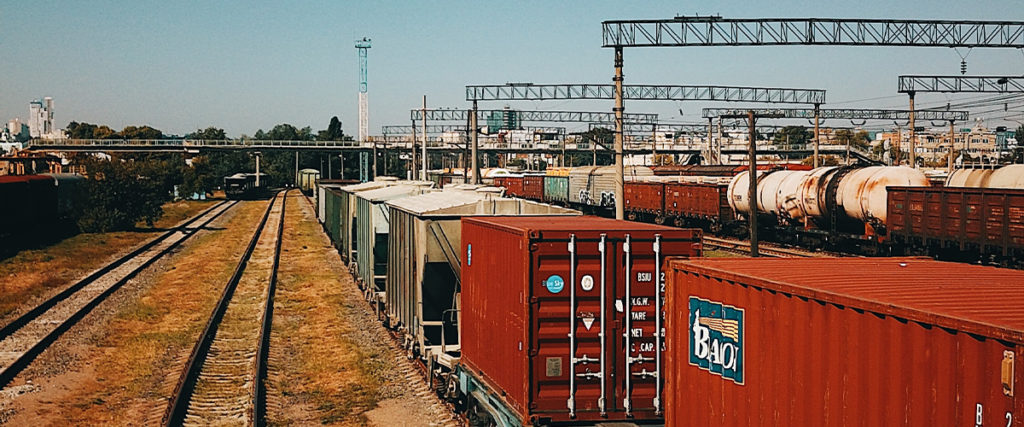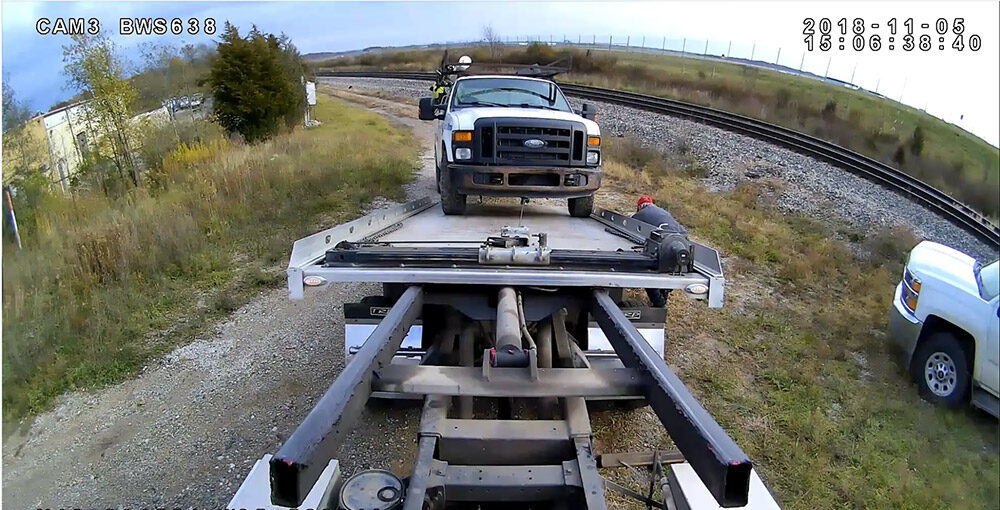FAQs for Camera Technology in the Freight Rail Industry

In the dynamic landscape of the freight rail industry, the integration of camera technology has become instrumental in enhancing safety, efficiency, and infrastructure maintenance. These cameras serve many purposes, from monitoring loading facilities to aiding in incident analysis. As technology evolves, so do the capabilities and applications of these cameras.
In these FAQs, we dive into the commonly asked questions, data management solutions, technological advancements, the unique challenges associated with their implementation, and more.
What are some common types of cameras used in the rail industry?
The rail industry utilizes several types of cameras, including:
- CCTV Cameras: They monitor loading and unloading facilities. These include PTZ cameras, which provide flexible monitoring and can pan, tilt, and zoom to cover large areas.
- Forward-Facing Cameras: These are mounted on trains to capture the track ahead, useful for incident analysis and safety. They are also seen on Hi-Rail vehicles operating on public roads to provide evidence in the case of accidents.
- Thermal Imaging Cameras: These detect heat signatures and potential overheating of equipment.
- Interior Cameras: These are for liability protection, training, documenting engineer activity, and monitoring control systems.
- Side and Rear Cameras: These improve visibility in and around maintenance-of-way machinery and Hi-Rail vehicles.
- Body-Worn Cameras: These are used by security staff and in incident documentation.
How can cameras assist in the maintenance of rail infrastructure?
- Collision Avoidance: Improving operator visibility to avoid collisions and potential backover fatalities.
- Remote Inspection: Allowing visual inspection of tracks, bridges, and tunnels without physical presence.
- Condition Monitoring: Recording and analyzing the state of infrastructure components to plan maintenance activities.
- Fault Detection: Identifying defects or damage early to prevent accidents and ensure timely repairs.
How is video data from rail cameras typically stored and managed?
Video data from rail cameras is usually stored and managed using:
- Onboard Storage: Utilizing DVRs (Digital Video Recorders) installed on trains that store data on hard drives, solid-state drives, or SD cards.
- Server Storage: Data is transmitted to network servers for remote access anywhere on the network.
- Cloud Data Management Systems: Transmit data to cloud servers and access it online.
What advancements are being made in camera technology for the rail industry?
- Advanced Alerts: The integration of collision-avoidance technology with rear-facing cameras to provide audible and visible alerts alongside rear-views on the same LCD screen.
- High-Resolution Cameras: Providing clearer and more detailed images.
- AI and Machine Learning: Enabling automated analysis to detect unusual activities or maintenance needs.
- Wireless Technology: Improving connectivity and data transmission from cameras.
- Integration with IoT: Connecting cameras with cloud storage, other sensors, and remote access for comprehensive monitoring and access.
Is there anything special about the exterior cameras that makes them more durable for a rail environment?
Unlike stationary CCTV cameras or cameras designed for the interior of railcars or locomotives, exterior-mounted cameras are exposed to an incredibly harsh environment. Exterior-mounted cameras generally have a shock/vibration rating and waterproofing or ingress protection rating, which is an indicator of their durability. IP67 or higher waterproofing and shock ratings above 15G are recommended.
The wiring also needs to be considered. Any exposed wiring must be cut-resistant, and a rubber booth should seal and cover any exposed connections to ensure they are watertight.
What are some challenges of implementing camera systems in the rail freight industry?
- Costs: While camera technology has become more affordable over time, it can still add up. Many organizations have a tough time quantifying camera and collision-avoidance product purchases until a serious preventable incident occurs or an incident where cameras can alleviate fault.
- Data Management: Handling and storing large volumes of video data effectively.
- Connectivity: Ensuring reliable data transmission, especially in remote or extensive freight yards.
- Installation: Handling logistics and downtime to get equipment installed properly. Installation also may include custom fabrication when retrofitting exterior cameras to specialized equipment or machinery.
Are there any government mandates on camera use on trains or maintenance of way vehicles? Yes and no.
Inward- and outward-facing locomotive recording devices are required on all lead locomotives in passenger trains as of November 2023. This has yet to be scaled to freight locomotives, but it may eventually happen. It specifically stipulates that “data captured must retain at least the last 12 hours of recorded footage and be stored in a crashworthy memory module.”
Also, the National Traffic Safety Board (NTSB) recommended backup cameras on all railway maintenance machinery in December of 2023.
As camera technology continues to evolve within the freight rail industry, it emerges as an essential tool for enhancing safety, efficiency, and infrastructure maintenance. From monitoring loading facilities to aiding in incident analysis, cameras serve diverse roles across rail operations.
Despite challenges such as data management complexities and logistical hurdles in installation, ongoing advancements—from high-resolution imaging to AI-driven analysis—underscore the industry’s commitment to innovation. By leveraging these advancements, the freight rail industry will create safer, more efficient, and more resilient rail networks.
